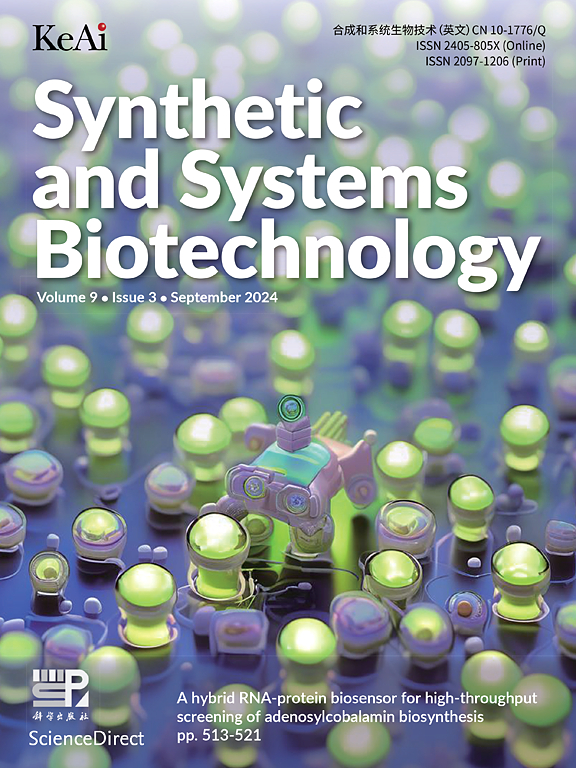一种用于基因簇表征的快速组合组装方法阐明了glidobactin的生物合成
IF 4.4
2区 生物学
Q1 BIOTECHNOLOGY & APPLIED MICROBIOLOGY
引用次数: 0
摘要
自然产物基因簇在可处理宿主中的异源表达为实现自然启发药物的可持续生产提供了巨大的希望。然而,在一个基因簇中,一些基因的作用通常是不清楚的,这可能会使识别产生所需分子所需的最小基因集变得困难。通常,未知基因的功能是通过耗时的还原技术来推断的,例如,在本地生产者中敲除单个和多个基因,然后进行表型分析。在这里,我们提出了一种快速组合方法,将参与glidobactin生物合成的单个基因组装成异源宿主中部分或完整簇的集合。随后用质谱法鉴定了化合物生产所需的最小基因。我们应用这种合成生物学方法来表征glidobactin基因簇,之前的基因敲除研究产生了相互矛盾的结果。在这个过程中,我们发现组合组装的一个额外的内在优势是产生多种菌株,这些菌株除了glidobactin外,还能产生潜在的理想类似物。本文章由计算机程序翻译,如有差异,请以英文原文为准。

A rapid combinatorial assembly method for gene cluster characterisation illuminates glidobactin biosynthesis
Heterologous expression of natural product gene clusters in tractable hosts offers great promise for achieving sustainable production of nature-inspired drugs. However, it is common for the roles of some genes in a cluster to be unclear, and this can make it difficult to identify the minimal gene set required to produce the desired molecule. Typically, the function of unknown genes is inferred by time-consuming reductionist techniques, e.g. single and multiple gene knockouts in the native producer, followed by phenotype analysis. Here, we instead present a rapid combinatorial method to assemble individual genes involved in glidobactin biosynthesis into a collection of partial or complete clusters in a heterologous host. Following up with mass spectrometry allowed identification of the minimum genes required for compound production. We applied this synthetic biology approach to characterise the glidobactin gene cluster, for which previous gene knockout studies had yielded conflicting results. In the process, we showed that an added intrinsic advantage of combinatorial assembly is the generation of multiple strains that produce potentially desirable analogues in addition to glidobactin.
求助全文
通过发布文献求助,成功后即可免费获取论文全文。
去求助
来源期刊

Synthetic and Systems Biotechnology
BIOTECHNOLOGY & APPLIED MICROBIOLOGY-
CiteScore
6.90
自引率
12.50%
发文量
90
审稿时长
67 days
期刊介绍:
Synthetic and Systems Biotechnology aims to promote the communication of original research in synthetic and systems biology, with strong emphasis on applications towards biotechnology. This journal is a quarterly peer-reviewed journal led by Editor-in-Chief Lixin Zhang. The journal publishes high-quality research; focusing on integrative approaches to enable the understanding and design of biological systems, and research to develop the application of systems and synthetic biology to natural systems. This journal will publish Articles, Short notes, Methods, Mini Reviews, Commentary and Conference reviews.
 求助内容:
求助内容: 应助结果提醒方式:
应助结果提醒方式:


